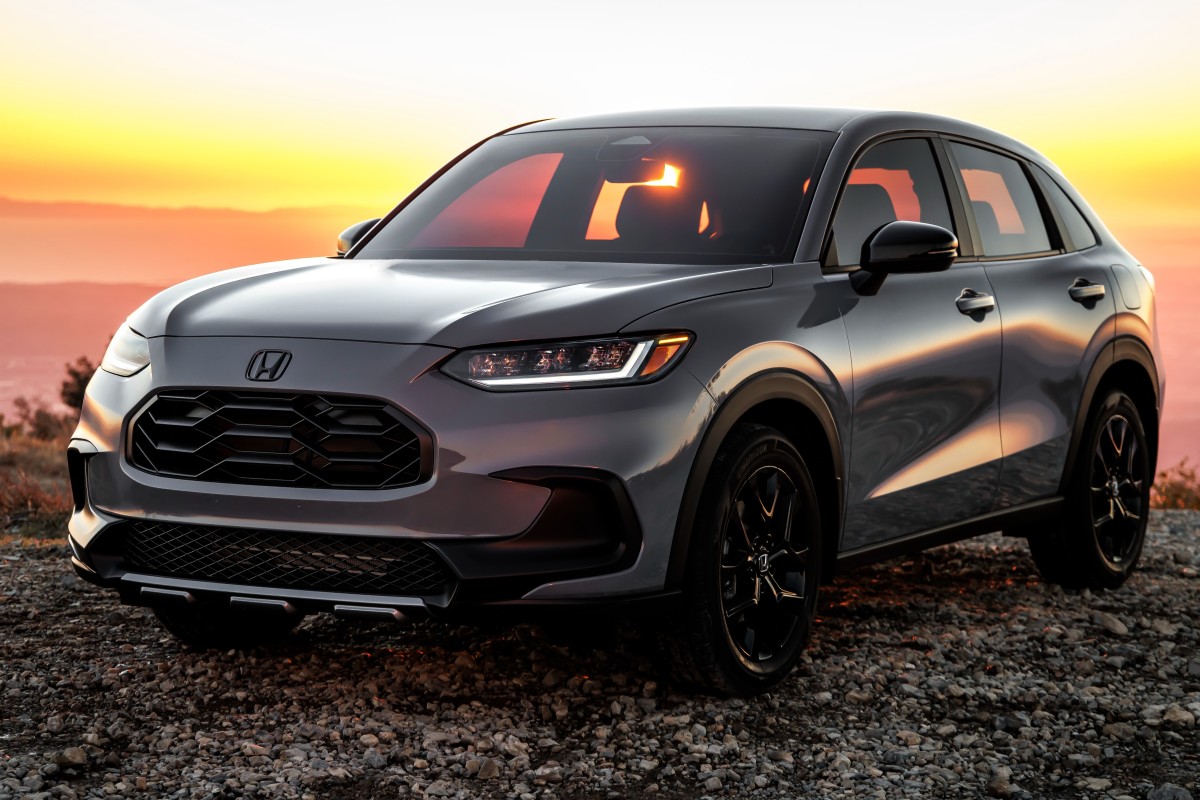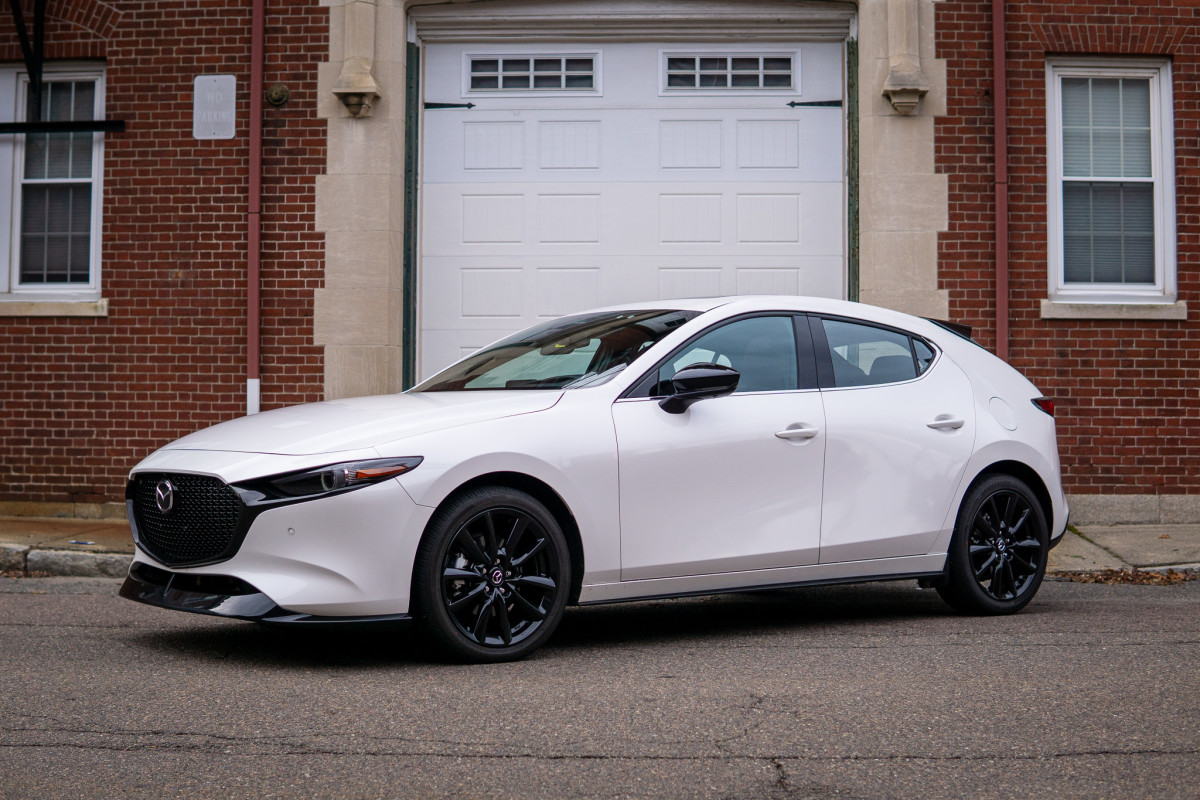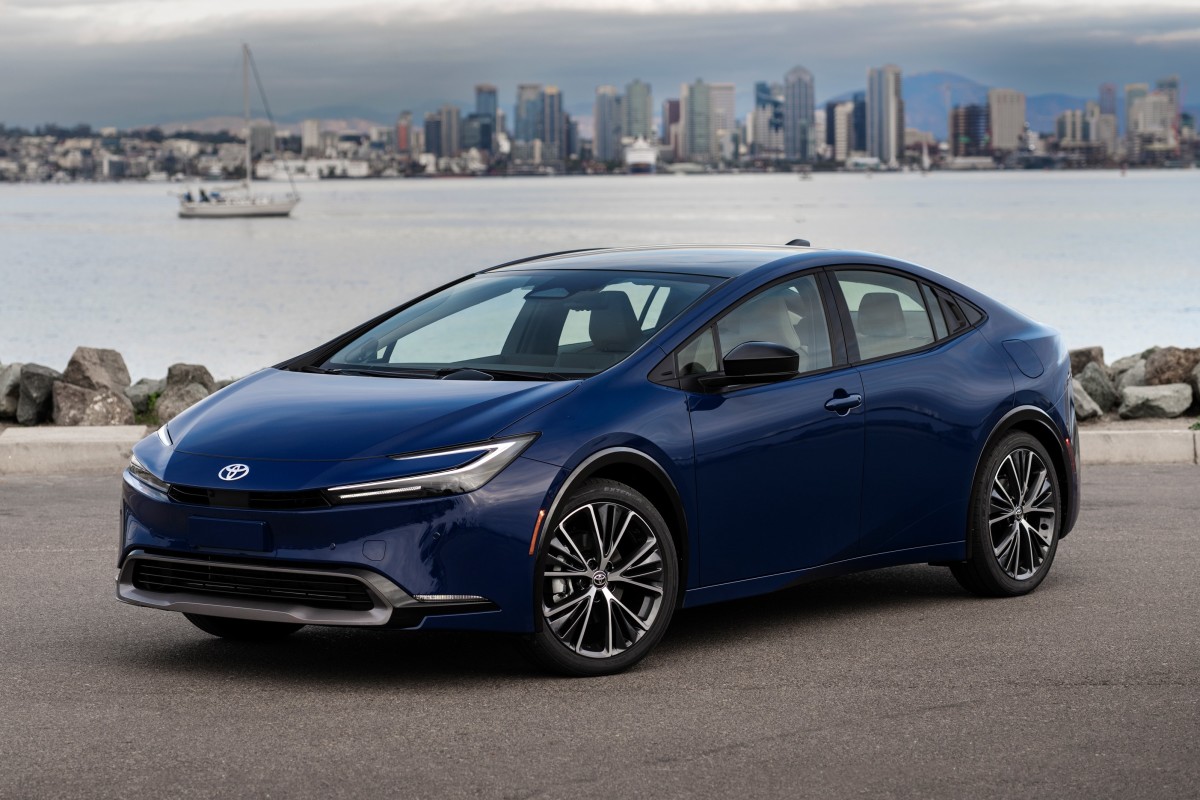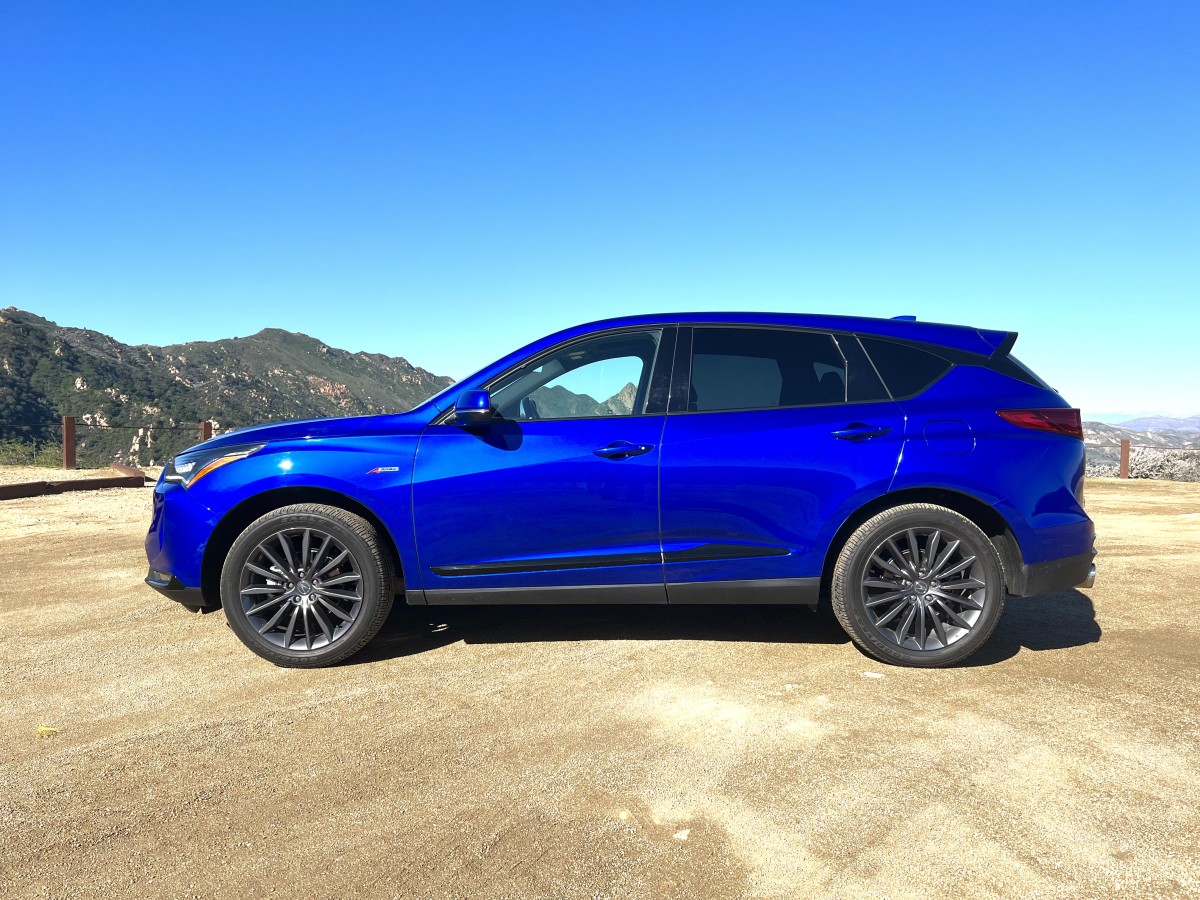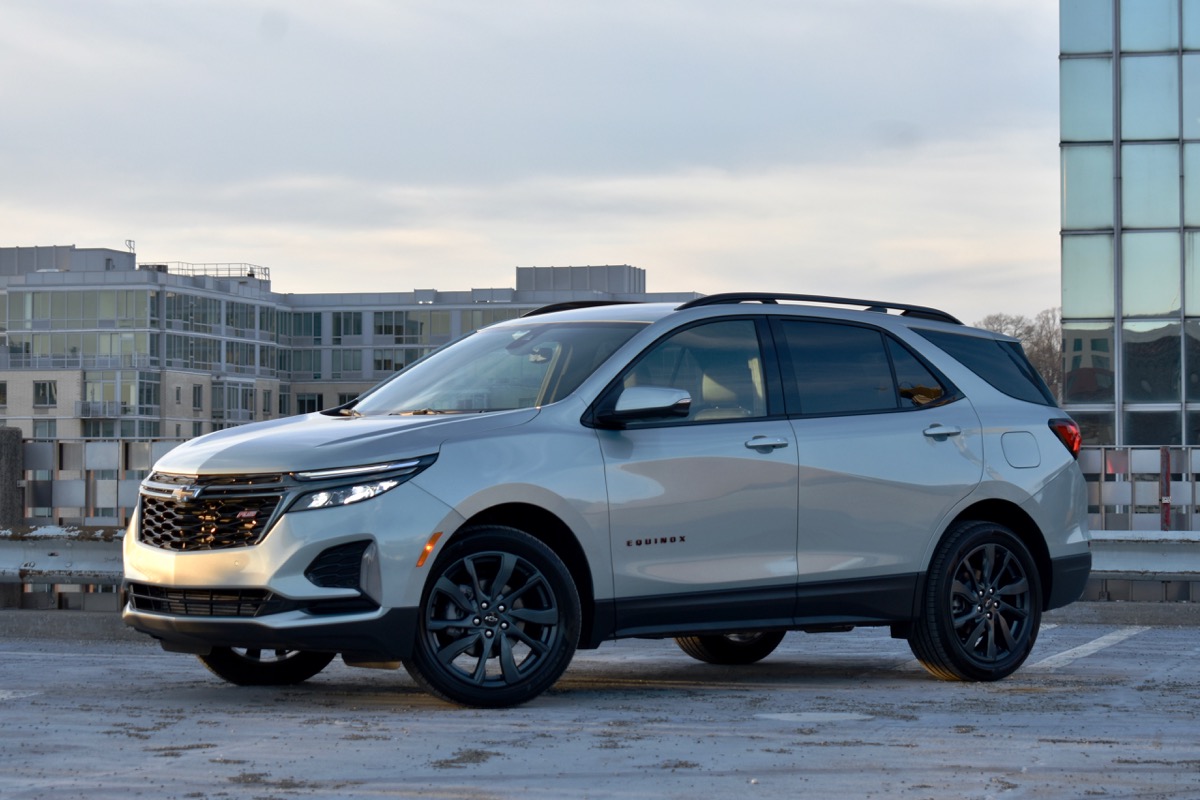Teen drivers pay the most expensive car insurance for many reasons. They’re still figuring out car control, reaction time, reading other drivers’ movements, and so on—it takes a lot of experience to safely and competently navigate America’s roads. Not only that, but they’ve got that whole growing up thing to do, too, like all of us. It’s tough enough being a new driver.
It’s hard finding the right new car to allow teens to safely transport themselves around, especially with curb weights, blind spots, and distracted driving on the rise. Luckily, there have been some big improvements in automotive safety over the past two decades, like more standard airbags, advanced driver-assistance technology, stability control, and more.
Helping consumers figure out which vehicles possess the best mix of these are independent safety organizations such as the National Highway Traffic Safety Administration (NHTSA), which perpetually ups its crash test standards and vehicle rankings. The Insurance Institute for Highway Safety (IIHS) is always tightening its testing rules, too, which has further reduced the number of vehicles that earn the firm’s Top Safety Pick and Top Safety Pick+ safety ratings.
For our list of the safest cars for teen drivers, we required these new vehicles to earn at least a Top Safety Pick rating, and better yet a Top Safety Pick+. We also determined that the starting price has to be below $30,000, which ruled out many midsize SUVs and sedans. You’ll find no sports cars or minivans here, but whether it's a top first car or a best used car down the line, check out our list below for the best cars for teens.
The Safest Cars for Teen Drivers in 2025
- Honda Civic
- Honda HR-V
- Hyundai Elantra
- Mazda Mazda3
- Mazda CX-30
- Subaru Crosstrek
- Subaru Impreza
- Toyota Corolla
- Toyota Corolla Cross
- Toyota Prius
Honda Civic
Totally redesigned in 2022, the Honda Civic earns an IIHS Top Safety Pick rating for the past couple of years, partly on the strength of its healthy suite of crash prevention and active safety features. Automatic emergency braking, lane-departure warning with lane-keep assist, traffic-sign recognition, and adaptive cruise control are all bundled in and even work with the optional manual transmission, something some other automakers can’t seem to manage. A couple of systems, like blind-spot monitoring, are also optional.
Better still, the Honda Civic sedan is just a very good small car to drive, communicating its limits very clearly to the driver and offering good performance and sure-footed front-wheel-drive (FWD) handling. In addition to its solid driving dynamics, which range from engaging in the standard 2.0-liter, 158-horsepower engine to honest fun in 200hp Si form, the Civic is also very practical. The cherry on top: Even the most powerful Civic Si sports excellent fuel efficiency, returning an EPA-rated 27 mpg city and 37 mpg highway.
Almost all of its trims cost less than $30,000 to start and come with many amenities. The cabin is as roomy as Accords of the 1990s, with a big back seat and trunk, and there’s also a spacious hatchback version. All versions return good gas mileage and have a solid reputation for reliability. There’s a reason the Civic has been a favorite for young drivers and first-time buyers for decades. The larger Honda Accord offers many similar features in a bigger package, but only its base model falls under $30,000.
Honda HR-V
Small SUVs are a good move for teen drivers, and Honda’s smallest SUV, the HR-V is a cousin of the Civic under the skin. This is no bad thing, as the HR-V shares many of the Civic’s best traits. It’s easy and fun to drive even if there are no performance models or manual transmissions as on the Civic, and it comes with all of the same built-in and optional safety systems.
Automatic emergency braking, adaptive cruise control with low-speed follow, lane-departure warning with lane-keep assist... it’s all there, though blind-spot monitoring and parking sensors are still just options. The HR-V’s more robust structure, however, earns it a Top Safety Pick+ designation from IIHS, the organization’s highest rating. Similarly cheap crossovers such as the Kia Seltos and Volkswagen Taos don’t do as well.
Although the HR-V’s footprint is a little smaller than the Civic’s, and not as big as the Honda CR-V’s, it’s no less practical. It comes in a functional SUV/tall hatchback shape with more cargo volume than the Civic hatchback and a little more room for passengers, front and rear. Unlike the Civic, it can be optioned with all-wheel drive (AWD), which is another safety advantage, particularly for drivers who live in snowy or icy climates. Since it’s a little heavier, the HR-V gets worse gas mileage than the Civic, by about three to five mpg in every measure, but predicted reliability is just as good, and even the most expensive trim starts at just under $30,000.
Hyundai Elantra
Last redesigned in 2021, the Hyundai Elantra got a light visual update for the 2024 model year, but it’s aged very well in every other sense. This affordable sedan (all non-hybrid trims are priced below $30,000) offers more backseat space than any of its compact rivals, a huge trunk, and a lineup of frugal and engaging engines. There’s a high-performance Elantra N, but it’s priced well beyond $30,000 and would be an insurance nightmare for a teen driver. Better to stick with the standard 147-hp 2.0-liter engine, the very thrifty 139-hp 1.6-liter Hybrid, or the optional 201-hp 1.6-liter Turbo N-Line.
All of these engines deliver acceptable performance, and while the Elantra is not as engaging or communicative as the Honda Civic, it’s an excellent, easy-to-learn choice for a new driver. The hybrid will also deliver up to 54 mpg, offering fuel savings that quickly add up over other choices. The Elantra also earns a Top Safety Pick+ from IIHS and five stars overall from NHTSA.
Hyundai makes automatic emergency braking with pedestrian detection, blind-spot monitoring, lane-keeping assist, rear cross-traffic alert, lane-following assist, driver-attention warning, and safe-exit warning standard equipment. Adaptive cruise control, enhanced automatic braking with cyclist detection, and parking sensors are optional, and they're included on many of the higher trims.
Mazda MAZDA3
The Mazda3 Sedan and Hatchback both earned an IIHS Top Safety Pick+ and a five-star overall NHTSA rating for 2024. The slinky-looking hatchback is slightly more expensive than the sedan, but for the sake of argument, they’re at least comparably priced. Both cars offer two basic powerplants, a 191-hp 2.5-liter four-cylinder or a 250-hp turbocharged version of the same engine, and both can be configured with front-wheel drive FWD by default or AWD as an option. Mazda is very good at making its cars fun to drive, and either powertrain produces a car with capable driving dynamics. The Turbo is more fun, but it’s also unavailable for less than $30,000. For teen drivers, we’d stick with the S anyway.
There was a time when advanced safety technology was relegated to the higher trim levels, but the 2025 Mazda3 has an impressive arsenal of technology even on the base model. Lane-keep assist, lane-departure warning, automatic high beams, adaptive cruise control with stop-and-go, pedestrian detection, and smart brake support, which helps shrink the Mazda3’s braking distance in an emergency, are all standard across the board. Some “nice to have” features like traffic-jam assist and front and rear parking sensors are only available on the top 2.5 Turbo Premium Plus trim, but all MAazda3s are well-equipped from the get-go.
Mazda CX-30
Like the Honda HR-V and the Civic, the Mazda CX-30 is a close relative of its compact sedan sibling, the Mazda3. It rides the same platform, has similarly sleek looks, and uses the same 2.5-liter turbo and non-turbo engines. The CX-30 costs a little more than the 3, but it also offers a considerable increase in interior room and cargo space. In a pinch, it can also engage in some light off-road duty or tolerate dirt and gravel roads that the Mazda 3 would have a harder time with. It’s not as large as the Mazda CX-5, but we think it’s an overall better-looking package. Almost coupe-like.
As on the 3, the Turbo models are expensive, starting at more than $34,000, but the regular CX-30 is well-equipped, fun to drive, and has a very upscale feel. It does a pretty good impression of a BMW X1 for far less money. Also as on the 3, there’s a massive list of advanced safety technology starting at the base 2.5 S trim level. It includes driver-attention alert, lane-departure warning, lane-keep assist, adaptive cruise control with stop & go, rear cross-traffic alert, and automatic emergency braking with pedestrian detection.
There are a few things you’ll need to step up to the top 2.5 Turbo Premium Plus to get, like traffic-jam assist, front and rear parking sensors, and rear smart brake support. All this earns the CX-30 a Top Safety Pick+ rating from IIHS and five stars from NHTSA. It’s also overall very fun to drive, which helps us pick it for the segment over the Chevrolet Trax, Ford Escape, and other compact crossover SUVs.
Subaru Crosstrek
The Subaru Crosstrek was redesigned for the 2024 model year, and, sadly, there’s no more manual transmission option, but in a way, that’s better for teen drivers. Now every version of this affordable go-anywhere machine gets the automaker’s full EyeSight suite of safety gear, one of the best in the industry. Advanced adaptive cruise control and lane centering, automatic emergency braking with pedestrian detection, driver-attention monitors, blind-spot monitoring, pre-collision braking, all are present and work well. The latest model even touts a new feature: automatic emergency steering that can help evade collisions, or at least mitigate some of the potential damage. In previous years, the optional manual models came without most of this gear.
Although its systems and styling have been comprehensively updated, the new Crosstrek is more of a heavy refresh than a complete redesign, and it stays true to the model’s established formula. AWD is standard, as it is on almost every Subaru, and there are two flat-four engines to choose from, a 2.0-liter with 152 hp and a 2.5-liter with 182, both mated to a continuously variable automatic transmission (CVT). On-road performance is tepid, but the Crosstrek has real off-road talent, and there’s an even more hard-core Wilderness version with 9.3 inches of ground clearance and other off-road extras. Only the 2.0-liter models, however, fall under the $30,000 barrier.
The Crosstrek’s hatchback body is cargo-friendly and capacious, and its systems are easy to use. It’s an easy vehicle for a new driver to acclimate to, and it puts reliability and capability ahead of performance. It’ll also return up to 29 mpg combined.
They may be bigger than the sort of thing we’d typically recommend for your average teen driver, but the Subaru Forester and Outback are study choices, abundant on the used car market, and can easily double up as transport for mom, dad, and offspring alike.
Subaru Impreza
If you're thinking that the Impreza looks a little like the Crosstrek, your eyes do not deceive you. The Crosstrek is based on the Impreza, and both cars share the same hatchback shape and nearly all of their systems, including engines and safety gear. The Impreza sits much lower than the Crosstrek, though, and it isn’t intended for off-road use. It’s about 100 pounds lighter, model for model, and it’s quite a bit less expensive than the Crosstrek, which itself is a bargain for what it is. Both were redesigned for the 2024 model year, though they reuse lots of pieces of the previous model. We also like it over the ho-hum Subaru Legacy—teen drivers surely will, too.
Curiously, the Impreza earns a Top Safety Pick+ designation from the IIHS, while the Crosstrek gets the second-tier Top Safety Pick nod. Both get five stars overall from NHTSA. The difference seems to lie in the IIHS’s recently revised side-impact test, titled the “Side updated test,” where the Crosstrek gets an “Acceptable” and the Impreza a “Good.” Both vehicles are quite safe, however, and practical to boot.
The Impreza’s lower ground clearance also improves handling, as the center of gravity is lower, and the lower weight and reduced drag improve gas mileage versus the Crosstrek by about 1 mpg in every measure. The interior is basically the same, with a huge 20.4 cubic-feet of cargo space behind the rear seats and 56 with them folded down, making it one of the most spacious in the compact car class.
Toyota Corolla
The Corolla has been a first-time-buyer favorite ever since it debuted in 1966, and the basic reasons for its popularity still apply. It isn’t exciting, although a new ultra-fast GR Corolla hot hatch was introduced for the 2023 model year, but it’s safe, easy-to-use, and one of the most consistently reliable cars on this list. Small wonder, then, that it’s been a staple of high-school and college parking lots for decades. The current Corolla dates to 2019, but it has received some significant updates. In addition to the GR Corolla, the lineup now contains more hybrid trims and more equipment, including a standard 8.0-inch infotainment screen running updated software. We also like its size: it’s not too unwieldy to maneuver around like some midsize cars, such as the larger Toyota Camry.
Everything else is familiar, however. The regular engine is a 169-hp four-cylinder mated to a CVT, with FWD standard and AWD optional. Sedans also offer a hybrid drivetrain, with 138 system hp. It’s the cheapest hybrid on the market at under $25,000, but in both vehicles, performance is tepid and unengaging. There’s also an attractive hatchback that forms the basis of the GR Corolla. In either body style, rear seat and cargo space trail the compact car pack, but everything is built to last and fuel economy is good, especially in the hybrid.
Both body styles earned Top Safety Pick designations from the IIHS and five stars overall from the NHTSA, and part of the reason is the Corolla’s vast array of active safety gear. All Corollas get the Toyota Safety Sense 3.0 suite of advanced safety technology, including automatic emergency braking with pedestrian detection, lane-departure warning with steering assist, automatic high beams, adaptive cruise control, and lane-tracing assist. The only optional safety technology comprises the blind-spot warning indicators and rear cross-traffic alert, which come in various packages.
Toyota Corolla Cross
The Corolla Cross first came stateside in 2022, and it’s the first time this famous name has been applied to a crossover. The Corolla Cross is based directly on the Corolla sedan platform, using the same safety systems and the same 169-hp engine, but in a big wagon shape. The back seat is still small for this vehicle’s size, and performance is anemic at best, but Toyota added a more potent hybrid model that’s quieter, faster, and gets better gas mileage. It’s really the one to have, but only the Corolla Cross Hybrid’s lowest trim starts below $30,000. That beat out competition like the Lexus NX, and Hyundai Tucson, and it's in the same ballpark as the Kia Sportage.
With all of the same safety gear as the Corolla and an even beefier structure, the Corolla Cross also earned a Top Safety Pick nod from the IIHS, but it still hasn’t been tested by the NHTSA. This SUV is smaller and cheaper than the popular RAV4, and with the hybrid powertrain, it can return up to 42 mpg combined. That's stellar by SUV standards, and a number only bettered by other hybrids like the Kia Niro, which hasn’t been evaluated by the safety rating agencies. Even the regular Corolla Cross returns a very respectable 32 mpg combined in FWD form, and AWD is also available.
The Corolla Cross expands the practicality of the basic Corolla package considerably, so if you like the sedan but need more room, it’s a good choice. Exciting it isn’t, but maybe that’s better for teenage drivers. If the Corolla Cross appeals but you don’t like the feel or looks, the slightly pricier Nissan Rogue also offers excellent fuel economy, a Top Safety Pick designation, and more space.
Toyota Prius
The most expensive vehicle on this list, the Prius only falls under our $30,000 barrier in its base-grade form, but it’s worth it. The first and most popular mass-market hybrid car, the Prius got a ground-up redesign for the 2023 model year. This entirely remade version is both much prettier and far more enjoyable to drive than any previous iteration, while still fulfilling the car’s basic mission. It remains hyper-efficient, capable of achieving up to 57 mpg combined, but it’s had upgrades in lots of other areas.
Toyota gave the redesigned Prius much more comfortable front seats, a boon to both Uber drivers and regular civilians. There’s much more power, 194 hp (and 196 with AWD) to the previous-generation car’s 121, which finally makes this car more interesting to drive and less of a slug on the highway or off the line. Then there's the styling, which looks straight out of a concept car studio. All told, it’s one of the best redesigns of a very established model in a long time, and no less practical or user-friendly. There’s also a plug-in hybrid Prius Prime, but that starts around $33,000.
What hasn’t changed in the Prius is its array of safety systems. The Toyota Safety Sense 3.0 suite includes forward automatic emergency braking with pedestrian detection, rear automatic braking, lane-departure warning with lane-keep assist, exit warnings, adaptive cruise control with lane centering, blind-spot monitoring, and rear cross-traffic alerts, and “proactive driving assist,” which helps drivers automatically maintain a safe distance from other vehicles. The new Prius earned a Top Safety Pick+ designation from the IIHS, but it hasn’t yet been tested by NHTSA.


